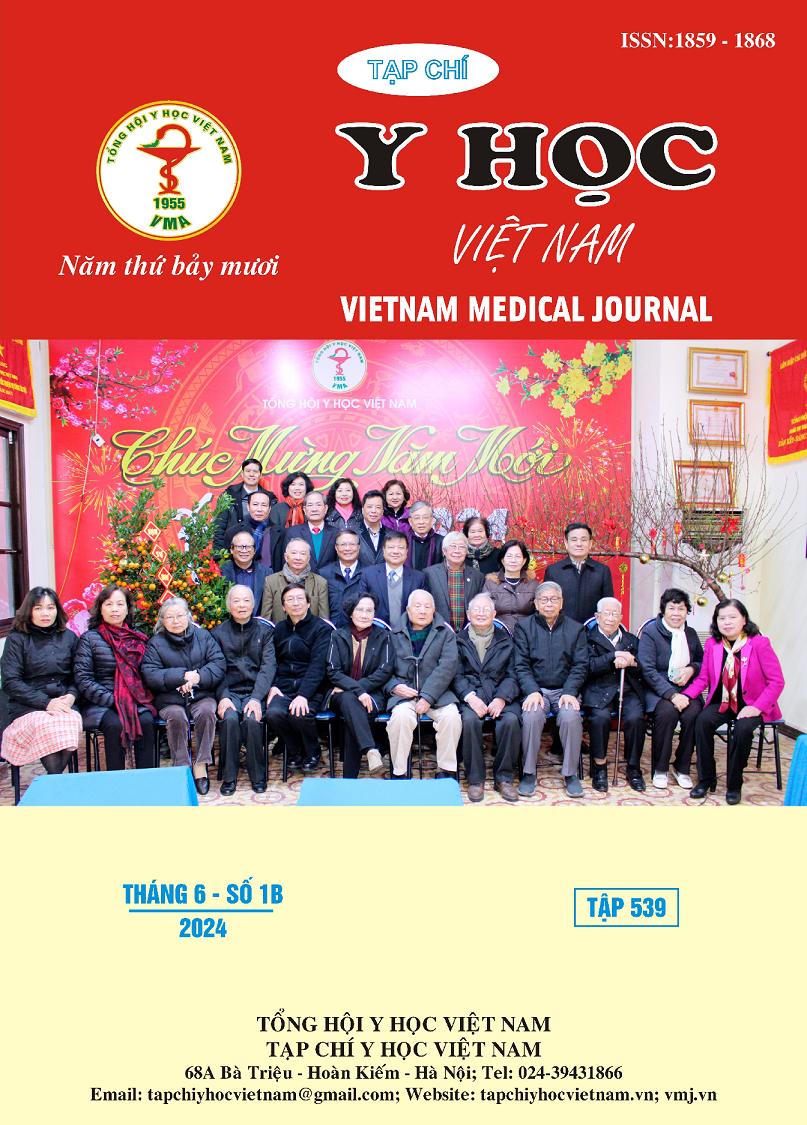TÌNH TRẠNG SÂU RĂNG CỦA HỌC SINH TẠI 17 TRƯỜNG TIỂU HỌC TRÊN ĐỊA BÀN THÀNH PHỐ TRÀ VINH NĂM 2024
Nội dung chính của bài viết
Tóm tắt
Mục tiêu nghiên cứu: (1) Đánh giá tình trạng sâu răng và (2) mô tả các yếu tố ảnh hưởng đến tình trạng sâu răng của học sinh tại 17 trường tiểu học trên địa bàn thành phố Trà Vinh năm 2024. Phương pháp nghiên cứu: Nghiên cứu cắt ngang mô tả, theo phương pháp chọn mẫu toàn bộ. Tiến hành khám từ ngày 02/04/2024 đến ngày 09/04/2024 tại 17 trường tiểu học ở thành phố Trà Vinh. Khảo sát tỷ lệ sâu răng, số lần đánh răng trong ngày, thời gian mỗi lần đánh răng, số học sinh từng đến nha sĩ bằng bảng câu hỏi. Số liệu được thu thập trực tiếp lúc khám, đánh giá theo Cục chính sách Y tế, Bộ Y tế và Phúc lợi xã hội Okayama, Nhật Bản. Kết quả: Tỷ lệ sâu răng của học sinh là 89,7%, ở các nhóm tuổi 6-8 và 9-11 lần lượt là 92,4% và 85,8%. Chỉ số dft (6-8 tuổi); dft (9-11 tuổi); DFT (6-8 tuổi); DFT (9-11 tuổi) lần lượt là 6,08; 2,54; 1,29; 2,19. Có mối liên quan giữa tình trạng sâu răng với một số yếu tố như nhóm tuổi (OR = 1,99, p<0,05), thói quen đánh răng ≥ 2 lần/ ngày (OR = 1,29, p<0,05), đánh răng ≥ 2 phút/lần (OR = 1,24, p<0,05), đi khám răng tại phòng khám nha (OR = 1,26, p<0,05). Kết luận: Tỷ lệ sâu răng của học sinh nằm ở mức cao cho thấy hiệu quả của quá trình chăm sóc răng miệng chưa được tối ưu. Do đó cần kiến nghị các biện pháp phù hợp thông qua chương trình Nha học đường để cải thiện sức khoẻ răng miệng của học sinh tiểu học trên địa bàn thành phố Trà Vinh.
Chi tiết bài viết
Từ khóa
Sâu răng, học sinh tiểu học.
Tài liệu tham khảo
2. Lê Hồng Hà (2016), “Điều tra hoạt động chương trình chăm sóc SKRM tại các Trường tiểu học TP.HCM năm 2015”, Tạp chí Y học TP.HCM, 20 (2).
3. Nguyễn Thị Hồng Minh (2020), “Tình trạng sâu răng sữa ở trẻ em Việt Nam năm 2019”, Tạp chí Y học Dự phòng, 30.
4. Nguyễn Thị Hồng Minh (2021), “Tình trạng sâu răng vĩnh viễn ở trẻ em Việt Nam năm 2019”, Tạp chí Y học Việt Nam, 502 (1), tr. 34-38.
5. Trần Tấn Tài (2016), Thực trạng bệnh sâu răng và hiệu quả của giải pháp can thiệp cộng đồng của học sinh tại một số Trường tiểu học ở Thừa Thiên Huế, Luận án Tiến sĩ Y học, Đại học Y dược Huế.
6. Aleksejuniene J, Dorthe H (2009), “Dental Caries Risk Studies Revisited: Causal Approaches Needed for Future Inquiries”, Int J Environ Res Public Health, 6, p. 2992-3009.
7. Ceren Damla ÖZBEK, Didem ESER, Kıvanç BEKTAŞ-KAYHAN, Meral ÜNÜR (2015), “Comparison of the tooth brushing habits of primary school age children and their parents”, J Istanbul Unıv Fac Dent.
8. Lien Nguyen et al (2008), “Should we brush twice a day? Determinants of dental health among young adults in Finland”, Health Economics, p. 282.
9. R.R. Ruff and R. Niederman (2018), “School-Based Caries Prevention, Tooth Decay, and the Community Environment”, JDR Clinal and Translation Research, 20(10), p.2-6.
10. Thuy Anh Vu Pham, Phuc Anh Nguyen (2018), “Factors related to dental caries in 10-year-old Vietnamese schoolchildren”, International Dental Journal.


